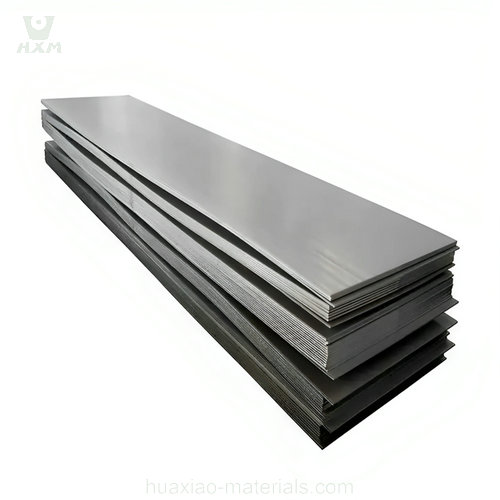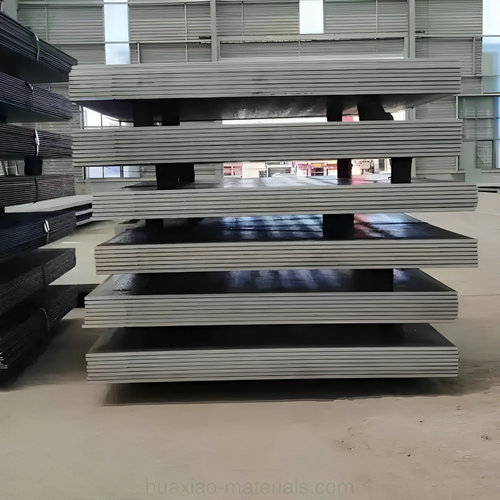Wear resistant steel plate
Wear-resistant steel plates are engineered for their ability to withstand abrasion and wear in high-stress applications. Commonly used in mining, construction, and manufacturing for extended equipment longevity.


Wear-resistant steel plates are engineered for their ability to withstand abrasion and wear in high-stress applications. Commonly used in mining, construction, and manufacturing for extended equipment longevity.


| Model | Hardness Range (HB) | Characteristics | Common Applications |
|---|---|---|---|
| NM360/NM400/NM450/NM500 | 360-500 | High strength, excellent wear resistance, good impact toughness | Mining machinery, construction machinery, conveyors |
| HARDOX 400/450/500/600 | 400-600 | Outstanding wear resistance with good weldability and formability; suitable for extreme wear environments | Heavy-duty equipment, mining, hoppers, conveyors |
| AR400/AR450/AR500 | 400-500 | High wear resistance for medium to heavy-duty wear conditions | Mining, bulldozer blades, buckets, heavy machinery |
| JFE-EH360/EH400 | 360-400 | Good wear resistance and impact toughness; suitable for forming and processing | Mining equipment, construction machinery, trucks |
| XAR400/XAR450/XAR500 | 400-500 | High wear resistance, combined with high toughness and processability | High-strength construction machinery, mining equipment, wear parts |
| DILLIDUR 400/450/500 | 400-500 | Excellent wear resistance and formability | Construction machinery, lifting equipment, mining |
Wear-resistant steel plate, also known as abrasion-resistant or AR steel plate, is a type of specialized steel designed to resist mechanical wear and abrasion, making it suitable for applications where components are exposed to abrasive or erosive forces. Here are the main characteristics of wear-resistant steel plate:
It’s important to select the appropriate grade and thickness of wear-resistant steel plate based on the specific wear conditions and application requirements to ensure optimal performance and durability.
Wear-resistant steel plates and ordinary steel plates differ significantly in their composition, properties, and applications. Here’s a comparison of the key differences between the two:
In summary, wear-resistant steel plates are specifically engineered to provide exceptional wear resistance and durability in abrasive environments, making them suitable for applications where ordinary steel plates would quickly wear out. The choice between the two depends on the specific application requirements and the wear conditions components will encounter.
Wear-resistant steel plates offer excellent wear resistance and are suitable for a wide range of industrial fields where components are exposed to abrasive wear. Their wear resistance is primarily attributed to their composition and heat treatment processes. Here’s an overview of their wear resistance and common industrial applications:
Wear-resistant steel plates exhibit exceptional wear resistance due to several key factors:
Alloying Elements: These plates are alloyed with elements such as chromium, manganese, nickel, and sometimes boron. These alloying elements enhance the hardness and toughness of the steel, making it highly resistant to wear.
Heat Treatment: Wear-resistant steel plates typically undergo heat treatment processes, such as quenching and tempering. This enhances their hardness, strength, and wear resistance. The heat treatment process also helps to achieve a uniform microstructure, which contributes to wear resistance.
Carbide Precipitation: During heat treatment, carbides form within the steel’s microstructure. These carbides provide additional hardness and wear resistance, making the plates suitable for abrasive wear environments.
Wear-resistant steel plates find applications in various industrial fields where abrasive wear is a prevalent issue. Common industries and applications include:
Mining: Wear-resistant plates are extensively used in mining equipment, including excavator buckets, dragline buckets, crusher liners, and screens. They protect critical components from abrasive wear caused by minerals, rocks, and abrasive materials.
Material Handling: Industries such as bulk material handling, including conveyor systems, chutes, and hoppers, rely on wear-resistant plates to withstand the abrasive impact of materials like coal, ore, sand, and gravel.
Construction and Earthmoving: Heavy construction equipment, such as bulldozer blades, loader buckets, and trencher components, benefit from wear-resistant plates to extend the lifespan of wear-prone parts.
Cement and Concrete: In the cement and concrete industry, wear-resistant plates are used in equipment like crushers, mixers, and wear liners to withstand the abrasive nature of cement clinker and aggregates.
Agriculture: Farm machinery, such as plowshares, harrows, and combine components, utilize wear-resistant steel plates to enhance durability in soil-contact applications.
Recycling: In recycling plants, wear-resistant plates are employed in shredder components and sorting equipment to withstand the abrasive effects of processing scrap materials.
Forestry: Equipment used in the forestry industry, including wood chippers and logging equipment, benefits from the wear resistance of these plates.
Automotive: In some automotive applications, wear-resistant plates are used in components subject to abrasive wear, such as truck bed liners and parts of construction vehicles.
Manufacturing: Manufacturing machinery and equipment involved in processes like metal forming and stamping may use wear-resistant plates in high-wear areas.
Waste and Environmental: In waste processing facilities and environmental cleanup operations, wear-resistant plates are utilized in equipment that handles abrasive waste materials.
In summary, wear-resistant steel plates are integral in various industries where components are exposed to abrasive wear, helping to extend the lifespan of equipment, reduce maintenance costs, and improve overall operational efficiency in high-wear environments.
There are several common types and grades of wear-resistant steel plates available, each designed to meet specific wear challenges in different industries. Here are some common types and their characteristics:
AR400 and AR450: These are abrasion-resistant steel plates with a hardness range of 360-440 BHN (Brinell Hardness Number). They offer good abrasion resistance and are used in applications like construction equipment, mining, and recycling.
AR500: AR500 wear-resistant steel plates have a higher hardness level, typically ranging from 470-530 BHN. They are suitable for more demanding wear applications, such as heavy-duty mining and material handling equipment.
AR600: AR600 plates provide even higher hardness, typically in the range of 570-640 BHN. They are used in applications where extreme abrasion resistance is required, such as in rock crushing and mining.
Hardox: Hardox is a popular brand of wear-resistant steel plates manufactured by SSAB. They come in various grades, including Hardox 400, Hardox 450, Hardox 500, and so on, with increasing levels of hardness and wear resistance. These plates find applications in mining, construction, and agriculture.
XAR: XAR is another brand of abrasion-resistant steel plates produced by ThyssenKrupp. They offer excellent wear resistance and are used in industries like mining, construction, and agriculture.
Wearalloy: Wearalloy is a brand of abrasion-resistant steel plates known for their toughness and impact resistance. They are used in applications where both abrasion and impact are factors, such as in the aggregate and cement industries.
Tensalloy: Tensalloy is a brand of wear-resistant steel plates manufactured by Clifton Steel. These plates are designed for high-impact and high-abrasion applications, including construction, mining, and heavy equipment.
Creusabro: Creusabro is a wear-resistant steel with high tensile strength and excellent toughness. It is suitable for applications in quarries, construction, and earthmoving equipment.
Raex: Raex wear-resistant steel plates, produced by Ruukki, offer excellent wear resistance and impact toughness. They find applications in mining, construction, and agriculture.
Dillidur: Dillidur wear-resistant plates are known for their high hardness and resistance to wear. They are used in various industries, including mining, construction, and recycling.
The choice of wear-resistant steel plate depends on factors such as the specific wear challenges faced, the severity of wear, and the industry’s requirements. Each type and grade of wear-resistant steel plate has its unique balance of hardness, toughness, and wear resistance, making them suitable for different applications and environments.
Evaluating and testing the performance of wear-resistant steel plates involves various methods and assessments to ensure they meet the required specifications and perform optimally in their intended applications. Here are some key steps and tests to evaluate wear-resistant steel plates:
Evaluating the performance of wear-resistant steel plates is a comprehensive process that involves a combination of laboratory tests, real-world simulations, and feedback from end-users. The goal is to ensure that the material meets or exceeds the wear resistance requirements of the specific application and provides cost-effective and reliable performance over its service life.

When selecting a supplier for wear-resistant steel plates, several factors should be considered to ensure you receive high-quality products that meet your project’s requirements. Here are the key factors to keep in mind:
By carefully considering these factors and conducting due diligence, you can select a reliable supplier of wear-resistant steel plates that meets your project’s requirements and ensures long-lasting performance.
Proper maintenance and care are crucial to maximize the service life and performance of wear-resistant steel plates. Here are some special requirements and measures for the maintenance and upkeep of wear-resistant steel plates:
By adhering to these special requirements and implementing proactive maintenance practices, you can extend the service life of wear-resistant steel plates and reduce downtime and replacement costs in high-wear environments.
Copyright@2023 Huaxiao Metal Corporation Limited . All rights are reserved
WhatsApp us
Feel free to contact us!
If you need our products, please leave us a message with the specific specifications and quantity through the window on the right!
Reply within 24 hours